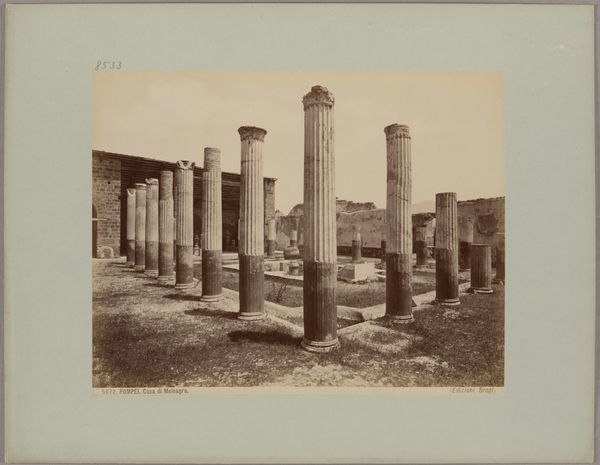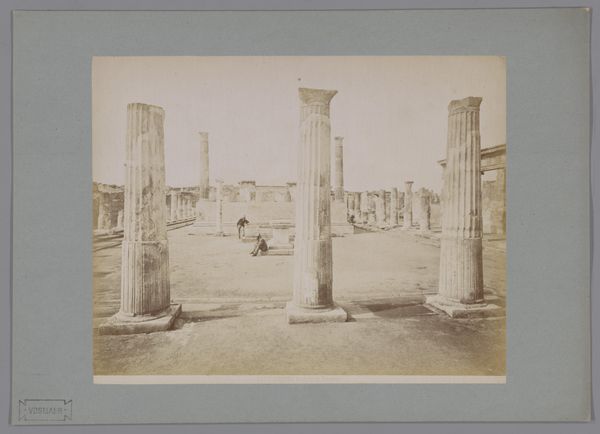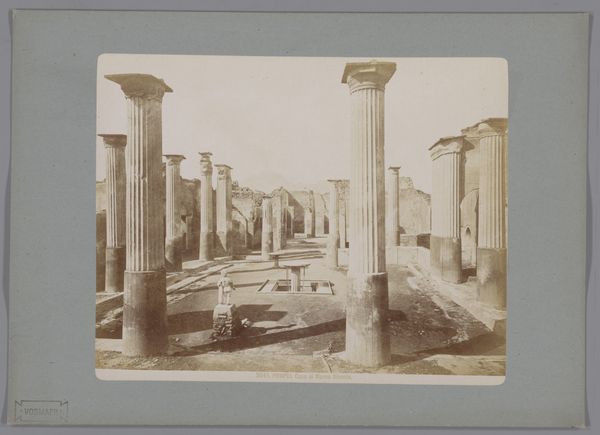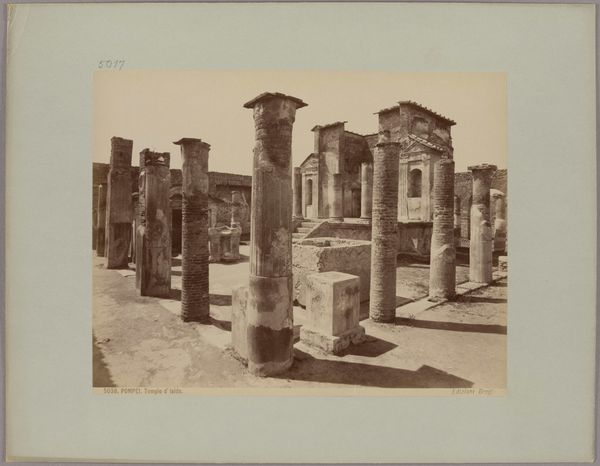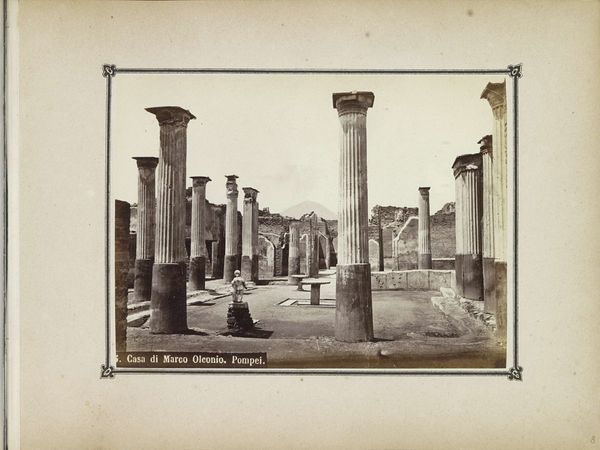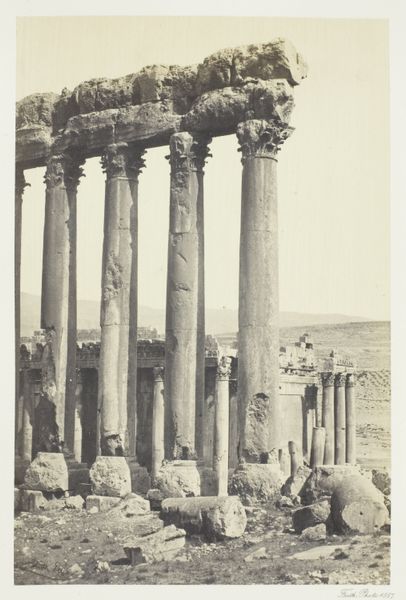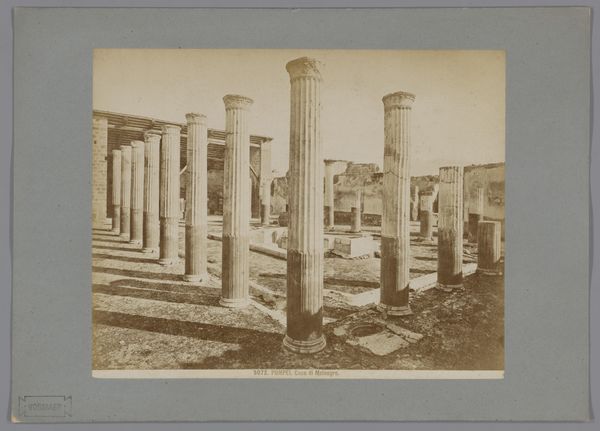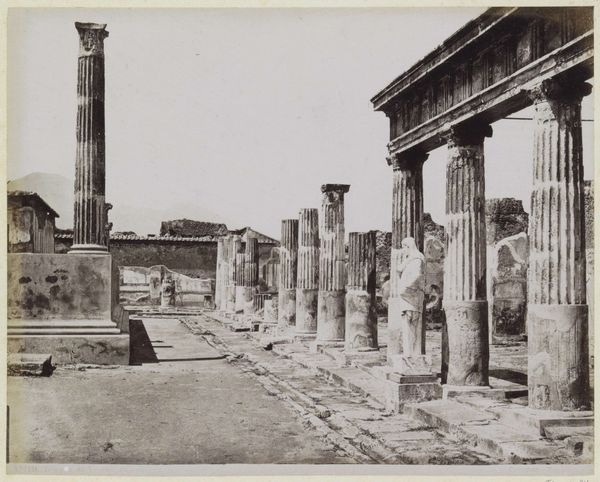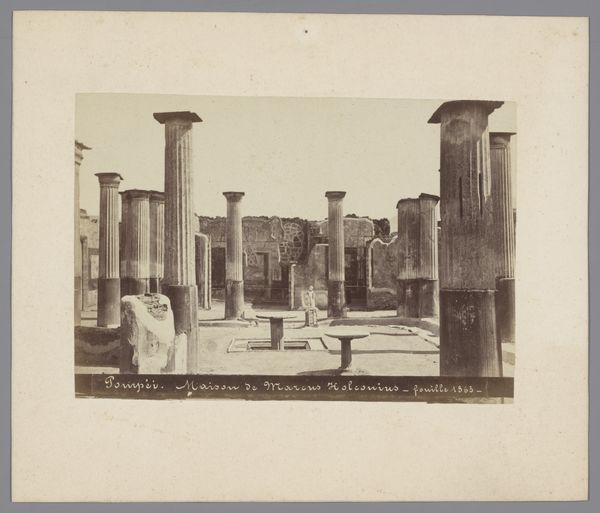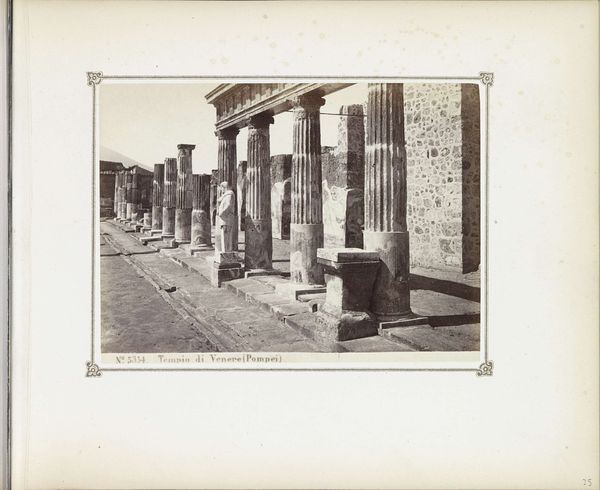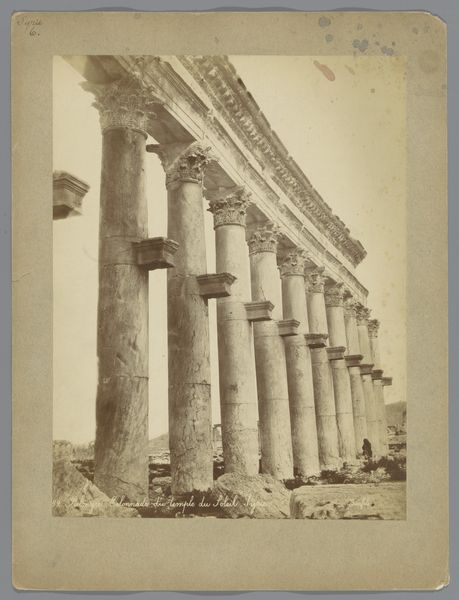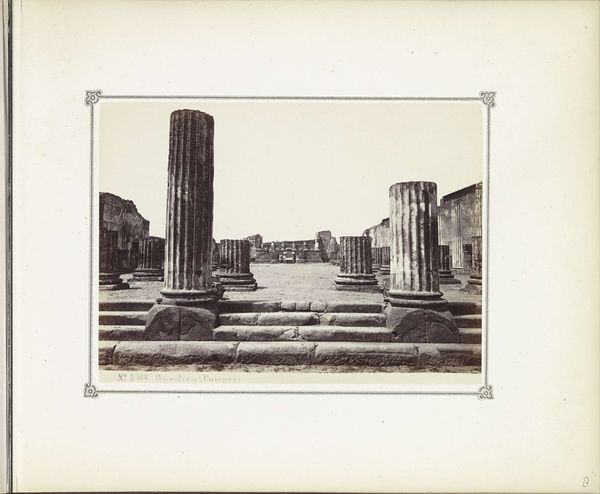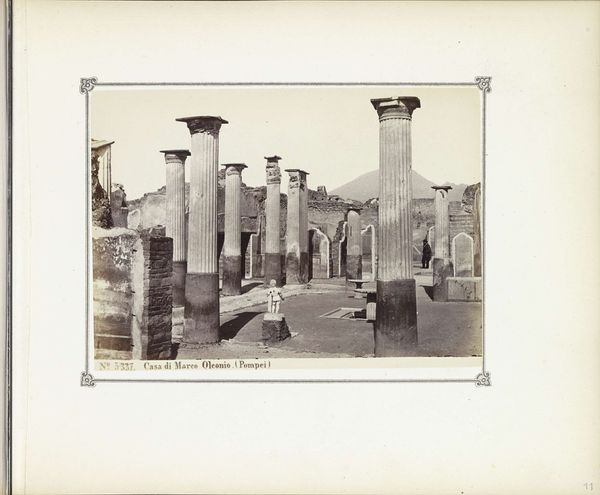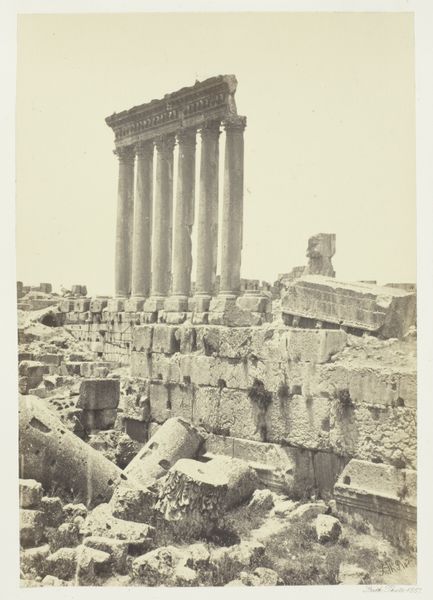
photography
#
greek-and-roman-art
#
landscape
#
photography
#
ancient-mediterranean
#
column
Dimensions: height 405 mm, width 306 mm
Copyright: Rijks Museum: Open Domain
Curator: This photograph, taken sometime between 1857 and 1875 by Giorgio Sommer, captures the ruins of Pompeii, Italy. What strikes you first about this scene? Editor: A sense of stark, weathered grandeur. The verticality of the columns, softened by the sepia tones, and their rhythm moving back into space suggests a somber monumentality. Curator: Indeed. Sommer’s work during this period documents the rediscovery and popularization of these ancient sites, shaping public perception of classical antiquity. Notice how he frames the columns – less as archaeological artifacts and more as protagonists within a story. Editor: I agree. Look at the way the light rakes across the fluted surfaces, emphasizing their texture and casting dramatic shadows. He seems particularly interested in the interplay of light and form. The arrangement, the tonal qualities... It almost borders on the picturesque, romantic even. Curator: Certainly, there’s a romantic gaze at play. The scale of the ruins against the assumed scale of the contemporary observer speaks volumes about the Victorian obsession with empire, time, and mortality. How do these rediscovered spaces legitimize present power structures? That is the question Sommer's photograph poses. Editor: Yet I'm drawn to the foreground. The broken pottery offers such textural contrast to the cool, hard lines of the columns. There's almost a dialogue between decay and order here. The composition neatly balances the organic forms with the structural. Curator: Precisely, the debris in the foreground humanizes the scene. It connects the grand narrative of Pompeii with the everyday lives abruptly halted by Vesuvius, serving as a visual reminder of loss. Editor: Sommer uses photographic conventions of the time while suggesting tensions through composition. His control of light to reveal structure is impressive, the ruins are so meticulously arranged in terms of shape and form. Curator: By capturing this blend of majesty and vulnerability, Sommer reminds us of the transient nature of civilizations and their lasting impact on those who come after. Editor: Ultimately, for me, it comes down to how he manages to create a photograph that is at once somber, detailed and quite arresting. It definitely encourages me to visit Pompeii to examine its architectural structures closely.
Comments
No comments
Be the first to comment and join the conversation on the ultimate creative platform.
